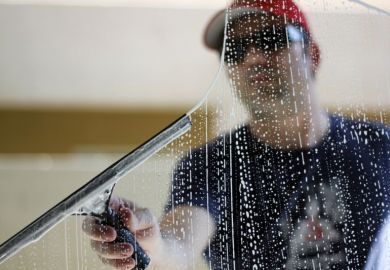A homosexual is not a homosexual is not a homosexual: the idea of a homosexual - once useful - is now profoundly unhelpful. The study of lesbian and gay lives in all their richness and pluralities has, I believe, advanced enormously over the past half century.
History, anthropology, psychology and sociology - alongside literature - have firmly killed off any idea of a universal or fixed homosexual species marching through evolution. Only traditional biologists seem to have escaped these ideas, with their continuing search for the essence of the gay gene. What we now know is that there are multiple and contested worlds of ever-shifting, pluralistic sexual experiences fleetingly grasped through a historically limited language that itself keeps changing.
Just as we cannot learn much about anyone by saying they are "heterosexual", so the term "homosexual" restricts vision. Now we have sexualities in all their incorrigible pluralities. A homosexual is not a homosexual is not a homosexual.
This study enhances our understanding of one area of this plurality. Peter Hennen is a US sociologist who has delighted in hanging around with three groups of men who play about with diverse potentials for sex and gender. Here are the Radical Faeries - gay men who prance and frolic with their femininities; "men in dresses", most of them manifestly not transgender nor transsexual nor transvestite, but living at "the margins of the margins" while parodying and playing with gender.
Here are the cuddly pot-bellied Bears - easily passing as straight, not at all effeminate, and pretty raunchy in their "masculine" sexualities. And here come the Leathermen, those dark-winged messengers of oh-so-serious heavy-duty male dungeon sex. Each group has its own long genealogy, all are now well-organised cultural tribes.
A queer ethnographer, Hennen is at his best when locating the cultural forms at work when he observes and talks with these men. He enters the Faeries' sanctuary, the Bears' bar night and the Leathermen's dungeon, showing how each provides "a calm place of relative stability" from putative 21st-century identity chaos. He shows the playfulness and the eroticism of much gay life and the tensions and movements within the groups.
But at the heart of his study is an interest in the ways in which the styles resist, or at least negotiate, the linkages of traditional homosexuality with effeminacy. There is a long history and wide cross-cultural evidence of effeminate masculinities - from dandies and fops through passivos and trannies - and on to sissies, queens and the like. This is a study of how some men have responded to this effeminacy charge, and he works with an overlay of theory (all the usual suspects - Judith Butler, Pierre Bourdieu, R. W. Connell - are here).
Through observation and interviews, he locates a series of creative innovations going on in these communities as they live in, and are restrained by, "hegemonic masculinity". The Bears and Leathermen actively build their masculinity, while the Faeries actively reject it in creating their new-style femininities. None of them, it turns out, has much political impact on the wider cultural definitions of masculine and feminine. For most participants, these choices are not political. But they do display multiple ways in which gender gets done.
This is a rich ethnography that tells us much about masculinity, effeminacy and the different sex that men get up to. It is a must for all gender-scholar bookshelves.
Faeries, Bears and Leathermen: Men in Community Queering the Masculine
By Peter Hennen. University of Chicago Press. 240pp, £26.00 and £10.50. ISBN 978022633 and 3280. Published 15 August 2008



